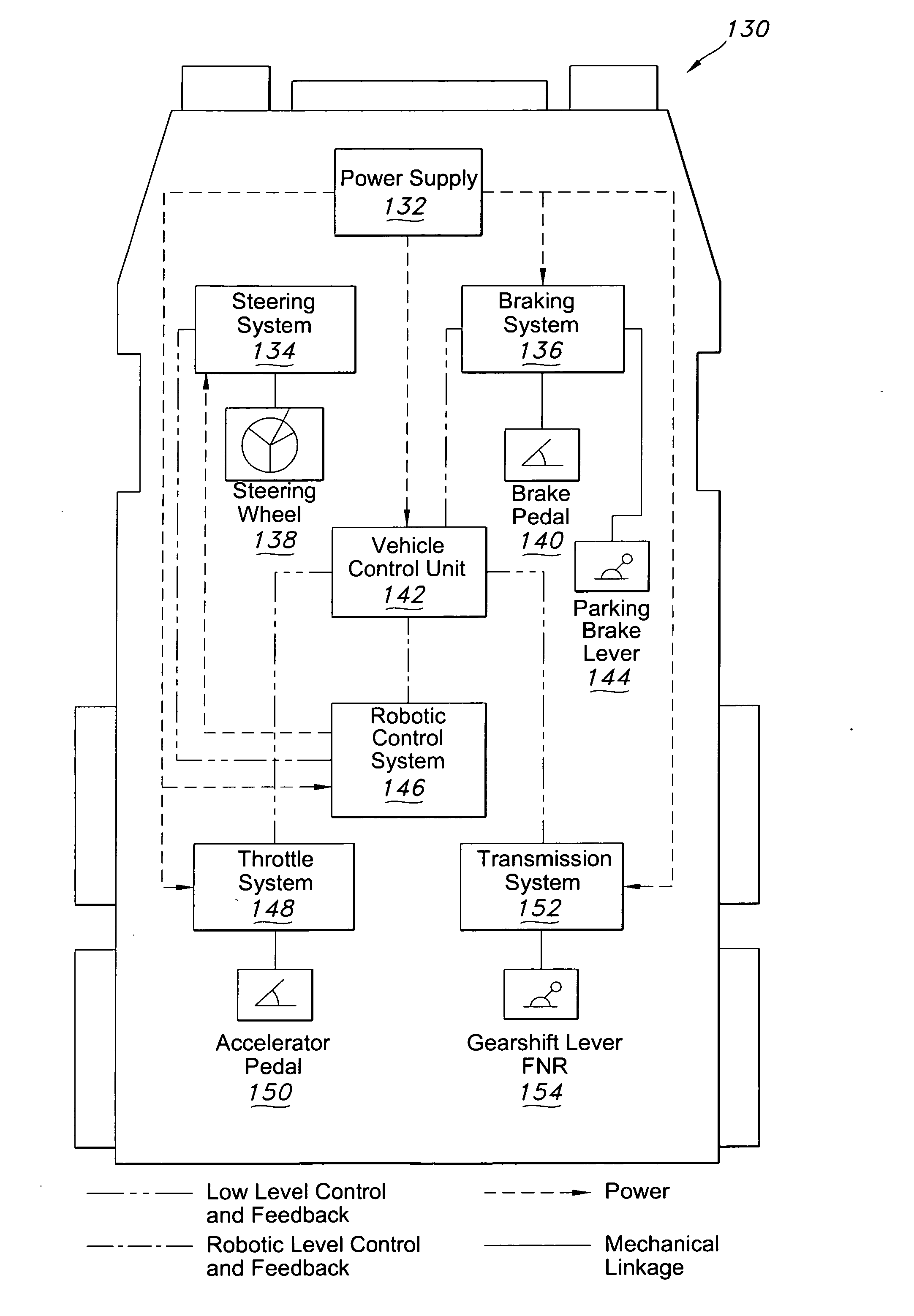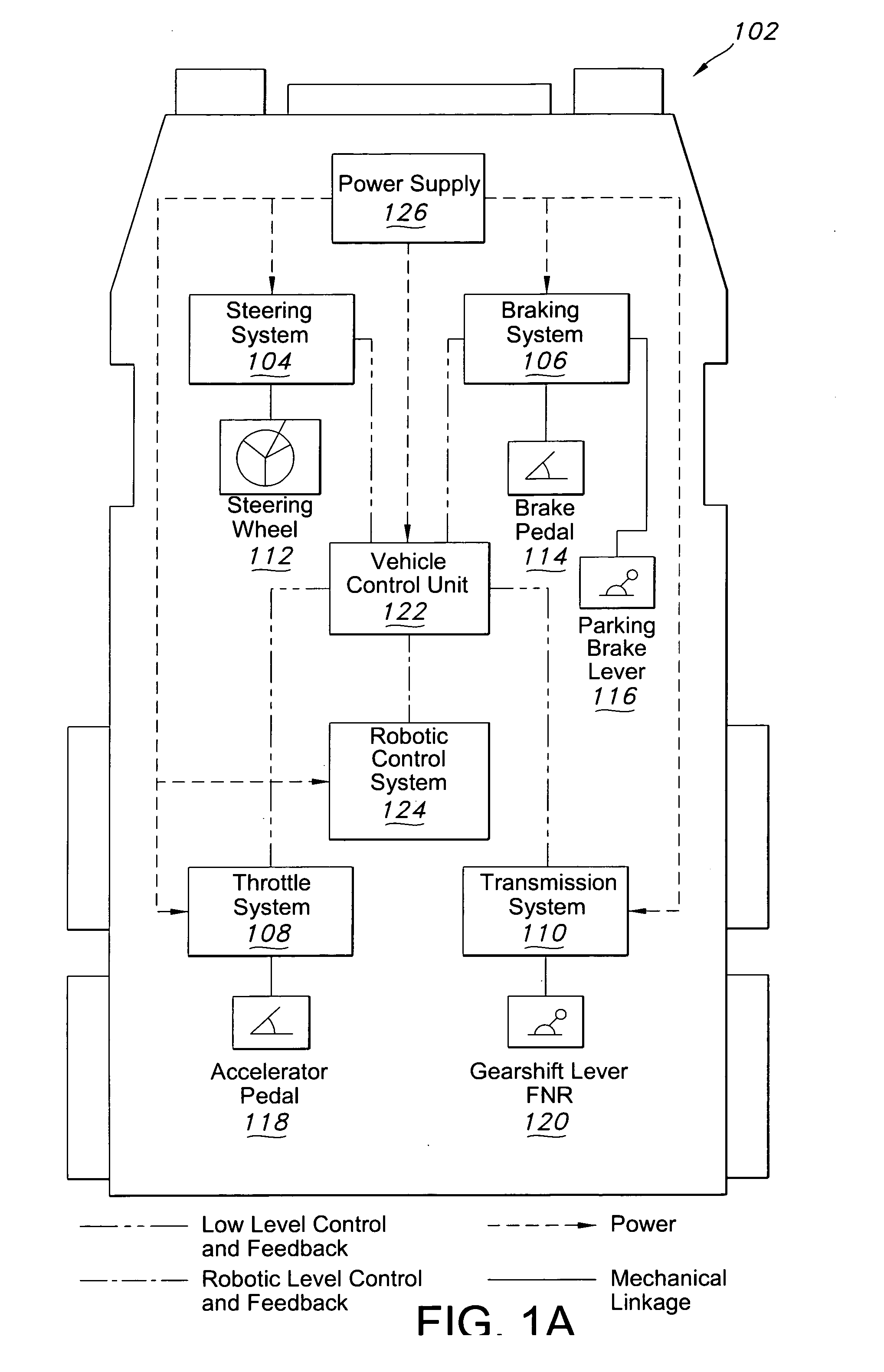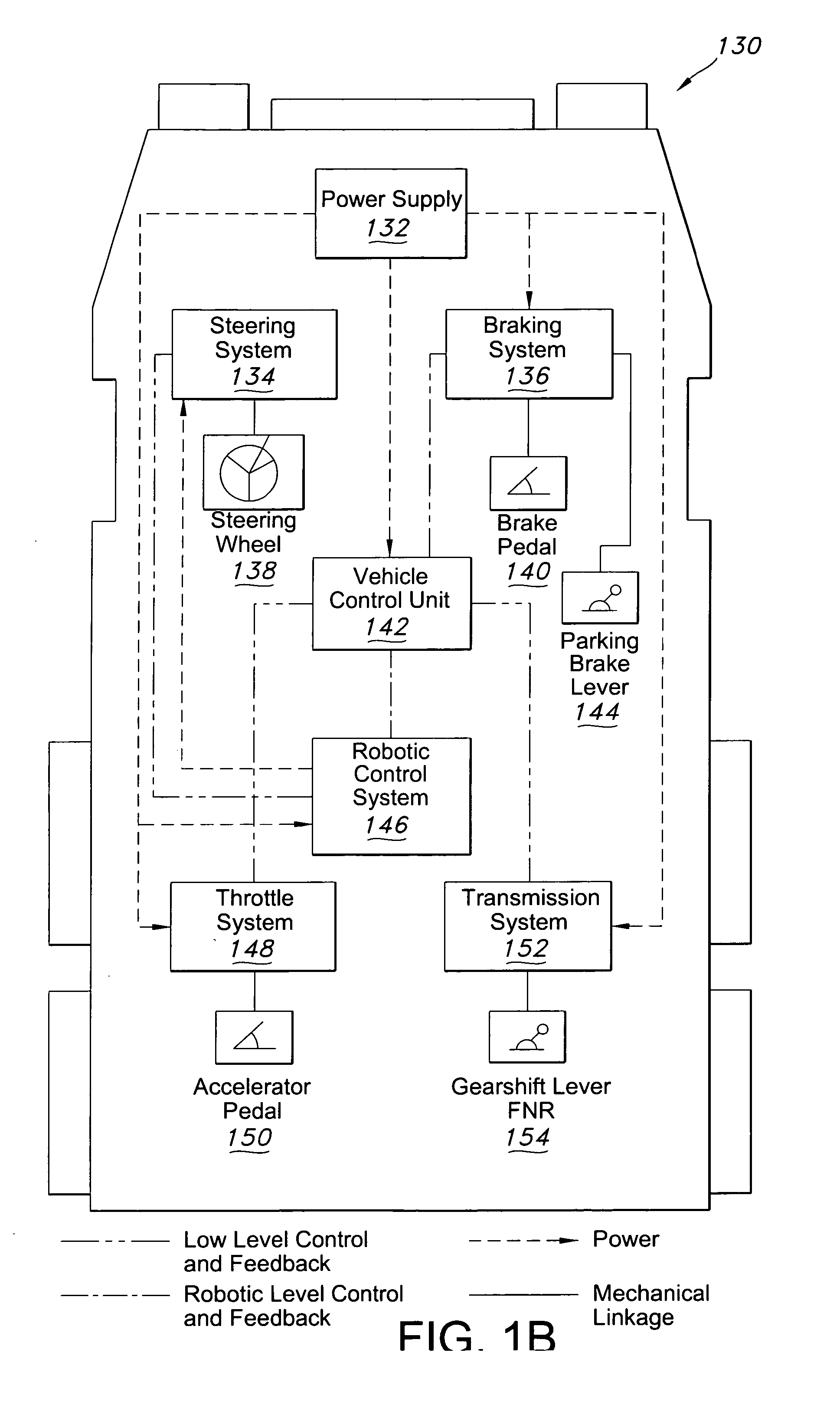Systems and methods for switching between autonomous and manual operation of a vehicle
- Summary
- Abstract
- Description
- Claims
- Application Information
AI Technical Summary
Benefits of technology
Problems solved by technology
Method used
Image
Examples
Embodiment Construction
[0035] Embodiments of this invention provide systems and methods for switching between autonomous and manual operations of a vehicle. More specifically, embodiments of this invention provide a vehicle, structures, systems, and methods, that are equally capable and in autonomous and manual modes: (i) by providing enhanced safety in all such modes; (ii) by being readily restorable to fully mechanical manual operation and switchable to fully autonomous operation; (iii) by efficiently overlapping and combining components of autonomous control systems, manual mechanical control systems, and safety systems; or (iv) by having a human interface that simplifies processes of switching between autonomous and manual operations of a vehicle and enhances the operability and safety of vehicle use in either mode.
Illustrative Vehicle
[0036] Embodiments of the present invention may be used in a variety of vehicles, such as automobiles, trucks, and utility vehicles. FIG. 1 is a block diagram of an il...
PUM
 Login to View More
Login to View More Abstract
Description
Claims
Application Information
 Login to View More
Login to View More - R&D
- Intellectual Property
- Life Sciences
- Materials
- Tech Scout
- Unparalleled Data Quality
- Higher Quality Content
- 60% Fewer Hallucinations
Browse by: Latest US Patents, China's latest patents, Technical Efficacy Thesaurus, Application Domain, Technology Topic, Popular Technical Reports.
© 2025 PatSnap. All rights reserved.Legal|Privacy policy|Modern Slavery Act Transparency Statement|Sitemap|About US| Contact US: help@patsnap.com



